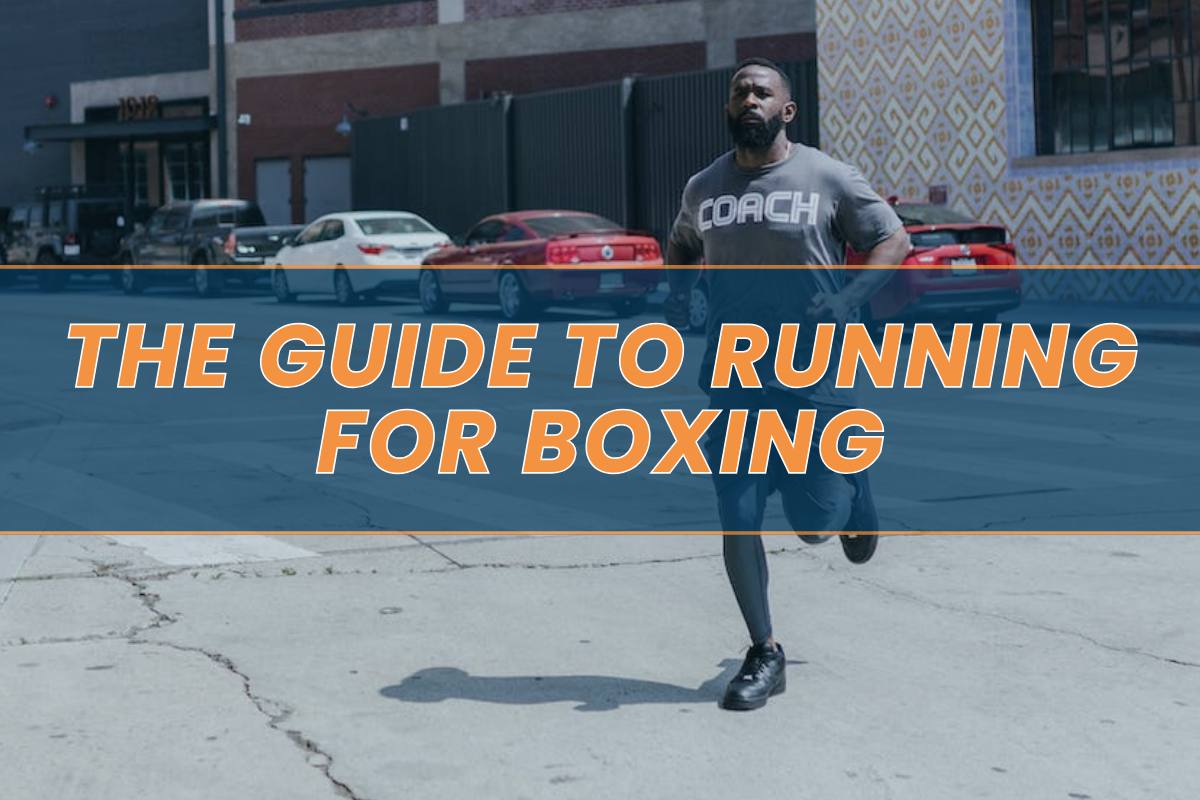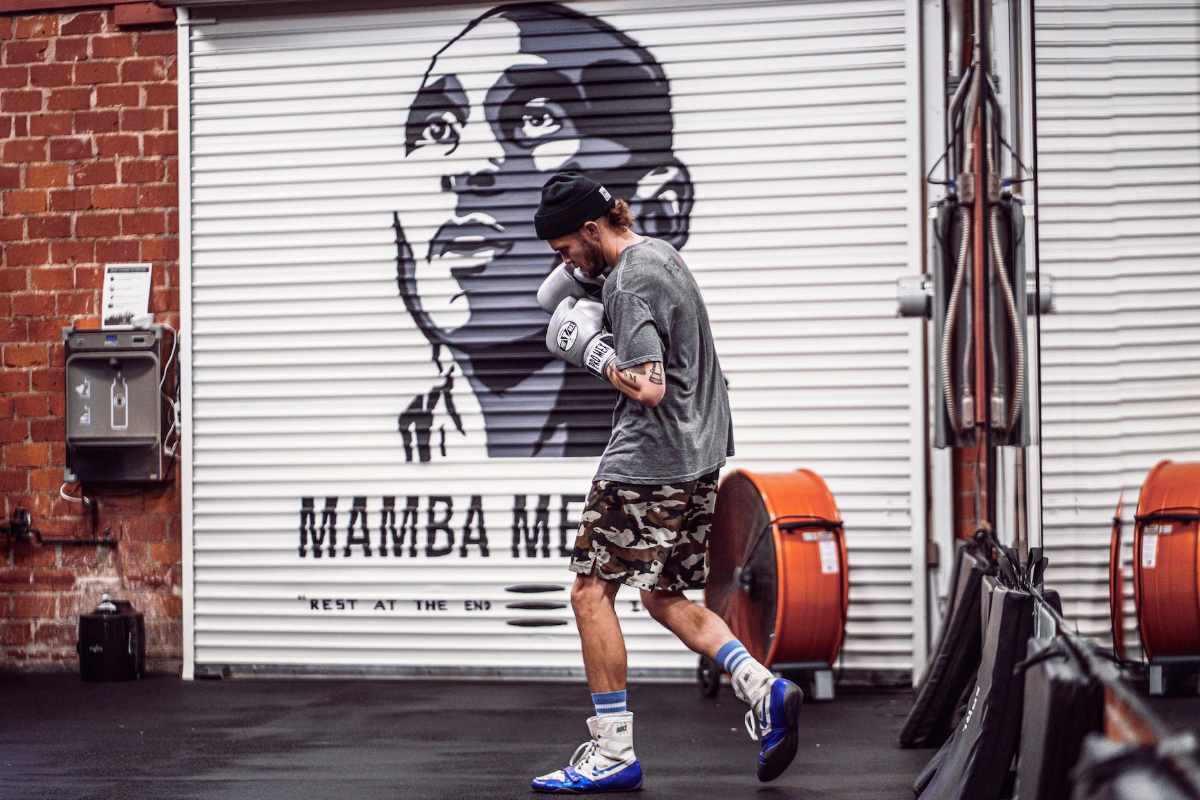The Guide to Running for Boxing: Maximizing Your Performance
Are you a boxer looking for ways to maximize your performance? Running for boxing is essential, as it improves endurance, agility, and strength. This guide can help take your workouts to the next level. It provides a valuable look at running for boxers, from basics such as equipment and techniques to creating tailored workout plans that are perfect for you. How many miles do boxers run? How do you combine running and boxing?
Learn all of this and more while unlocking your potential with this guide!
What Are the Benefits for Boxers Running?
Running for boxing helps develop endurance, agility, and speed by building muscle coordination and strength. A boxer’s running routine should include 3 to 5 runs per week, with distances ranging from 5-6 miles for beginners and up to 10+ miles for higher-level athletes.

Why Is Running Important for Boxers?
Running is an integral part of a boxer’s training routine. It helps build endurance, bursts of speed, and aerobic conditioning, which are important in a boxing match.
Running also helps strengthen your muscles, improves cardiovascular fitness, and increases stamina, which are all beneficial for boxers. Running trains the leg muscles to be strong and agile, which is essential in combat sports.
Muscles in other parts of their body are also affected by running, leading to improved hand speed and punch power from strong triceps, chest, and front deltoid muscles
Running as Part of Boxer’s Training Plan
Boxers typically run between 3 to 5 times a week as part of their training. Running is an important part of a boxer’s fitness regimen, as it helps develop muscular endurance, conditioning, and cardio performance. For most boxers, running at least 4-5 miles per session is preferable in order to maximize results.
The intensity of training for a boxer depends on their level in the sport. The type and intensity of exercise should match their current physical conditioning, as well as their fitness, strength, and overall boxing skill level.

Pro Tip:
You can run both before and after boxing, making running part of your warm-up or cool-down routine. However, it is important to keep your overall energy needs in mind if you want to combine both types of training in the same day.

Pro Tip:
You can run both before and after boxing, making running part of your warm-up or cool-down routine. However, it is important to keep your overall energy needs in mind if you want to combine both types of training in the same day.
Whether training in the gym or on the street, boxers need to develop endurance and the ability to produce short bursts of energy. While both types of training can help boxers reach these goals, they come with their own advantages and disadvantages.
1. Running for a Boxer in the Gym
Running in the gym is an important part of a boxer’s running routine, as many boxers prefer running on treadmills.
Treadmills create more consistent conditions than natural terrain, giving boxers better control over their pace, regardless of the weather conditions. They also provide real-time datato help track progress, including time, distance, average speed per mile/km, calories burned, and incline changes.
Additionally, most gyms are climate controlled, which limits factors like wind resistance and keeps you from getting too hot or cold on long runs. However, treadmill running can make it hard to maintain motivation day after day, so it is a good idea to mix things up every now and then.
2. Running for a Boxer on the Street
Road running is also a necessary component for boxers, as it can help to develop the strength and conditioning needed in the ring. Running on different terrains helps condition the feet, challenging them to adapt with every step.
Boxing roadwork also has many benefits for athletes looking to increase agility, due to various terrain that is encountered on runs such.
However, there are also some disadvantages to consider. For instance, street running may increase stress on the body due to frequent corners and inclines. It can also lead to fatigue quicker than running on a treadmill.
Boxer’s Running Training Program
With the help of this training plan, boxers can optimize their running potential to maximize performance on the ring. They should learn how to incorporate distance running and high-intensity interval training into their regimens for optimal results.
A boxer’s running training plan should take into account the frequency, distance, and intensity of runs. It is typically incorporated with other components of a boxer’s overall fitness regimen to help build stamina and endurance for competition. Boxers usually run 3 to 5 times per week, either in the gym or on the street, depending on their overall fitness level.

1. Training Plan for Beginners
For your first run as a boxer, you don’t have to start fast. Instead, work within your current exercise capabilities. Ease upir way into sprinting for boxing and build duration over time.
| Monday | Tuesday | Wednesday | Thursday | Friday | Saturday | Sunday |
|---|---|---|---|---|---|---|
| 2 miles easy pace | Rest day | 4x200m sprints with 1 minute jogging in between | Rest day | Rest day | 3 miles long run | Rest day |
| 2.5 miles easy pace | Rest day | 2 miles hill running | Rest day | Rest day | 3.5 miles long run | Rest day |
| 3 miles easy pace | Rest day | 8x150m sprints with 1 minute jogging in between | Rest day | Rest day | 4 miles long run | Rest day |
| 3.5 miles easy pace | Rest day | 3 miles hill running | Rest day | Rest day | 4.5 miles long run | Rest day |
Use this plan to combine running with your boxing training and increase overall distance slowly.
Subscribe to Our Running Newsletter!
Get free running tips from renowned professional athletes and discounts from top-notch brands.
2. Training Plan for Experienced Athletes
Experienced boxers should run 4 to 5 times a week, adding more intervals, as these will increase explosive power, which is essential for punches and quick footwork. You can increase distance according to your training level, but avoid endurance-pace running to save energy for boxing.
| Monday | Tuesday | Wednesday | Thursday | Friday | Saturday | Sunday |
|---|---|---|---|---|---|---|
| Rest day | 10x100m intervals with 30-sec jog in between | 3 miles recovery jog | Rest day | 4 miles hill run | Rest day | 5 miles long run |
| Rest day | 8x150m intervals with 30-sec jog in between | 3 miles recovery jog | Rest day | 4 miles hill run | Rest day | 5.5 miles long run |
| Rest day | 6x200m intervals with 30-sec jog in between | 3.5 miles recovery jog | Rest day | 4 miles hill run | Rest day | 6 miles long run |
| Rest day | 10x150m intervals with 30-sec jog in between | 3.5 miles recovery jog | Rest day | 4 miles hill run | Rest day | 6.5 miles long run |
A boxer’s training programme is more complex than just going jogging, as it aims to build endurance and increase bursts of speed.

Pro Tip:
Be sure to have at least one rest day a week, with no training (whether running or boxing). Your body needs time to fully recover if you want to perform better.

Pro Tip:
Be sure to have at least one rest day a week, with no training (whether running or boxing). Your body needs time to fully recover if you want to perform better.
A Boxer’s Main Equipment for Running
The right running gear can mean the difference between having an effective training session and simply going through the motions. Below, you will discover the equipment that is essential for boxing-specific running workouts:

1. Running Shoes
Running shoes are extremely important for boxers who include running as part of their training routine. Having a high-quality pair of running shoes with the right fit is essential to ensure optimal performance and protect against common injuries.
2. Moisture-Wicking Clothes
Performance clothing that draws sweat away from the skin and dries quickly is essential for any athlete. Whether you’re a boxer or a runner, specialized clothing with moisture-wicking fabrics can make all the difference in your training performance and hygiene.
3. Cold Weather Gear
Running in cold weather can be challenging, but it doesn’t have to be. To ensure your safety and comfort, there are certain pieces of cold-weather gear you need to take into consideration.
Is There a Universal Shoe for Running and Boxing?
When it comes to running and boxing, the type of shoes used can make a big difference in performance. Boxing shoes provide additional features, such as custom foot support and superior traction that is needed when pivoting, sliding, and shuffling. Comfortable ankle support is also essential for boxing. This is a feature that most running shoes lack.
Do boxing shoes make a difference? You can run in boxing shoes, but you need to avoid using them for long distances because of their reduced cushioning. In addition, you can sometimes box in running shoes, but it may increase your risk of injury due to lack of ankle support.
Frequently Asked Questions about Boxing Running Workouts
How Do You Train to Run for Boxing?
Boxers incorporate jogging, sprinting, and intervals into their running routines to improve performance. For novice athletes starting out with a boxing-specific running program, a typical workout may begin with 100-meter sprints, followed by rest/shadow boxing intervals before repeating the circuit again.
How Many Days a Week Should You Run for Boxing?
A boxer should run 3 to 5 days per week as part of their training plan. An appropriate balance can be set between working hard on your running while saving enough energy for boxing.
Is Treadmill Running Good for Boxing?
Treadmill running has many advantages for boxers that should not be overlooked. Treadmill running offers a controlled environment where you can track performance, improve form, work on core strength, and balance cardio with speed training drills.
Is Running Good for Boxing?
Running is an essential component of any boxer’s training program, as it helps improve their overall cardiovascular endurance. By running consistently, boxers can enhance their stamina and strength.
Final Thoughts on Running for Boxing
Running is an essential component of boxing training. Running prepares athletes not only for endurance, but also explosive bursts towards the ends of fights or rounds.
It also helps develop a tuned body and an active mind that can maintain focus during stressful bouts in the ring.
Do you incorporate running in your boxing routine? How many miles a week do you run? Please share your experience in the comments below.
Also read:
- Are Boxing Shoes Good for Running
- Best Running Socks That Prevent Blisters
- How Long Is Track Season
- Benefits Nude Running
References:
- Isaiah Di Domenico, Samantha M. Hoffmann, and Paul K. Collins. “The Role of Sports Clothing in Thermoregulation, Comfort, and Performance During Exercise in the Heat: A Narrative Review.” Sports medicine – open vol. 8,1 58. 28 Apr. 2022 https://sportsmedicine-open.springeropen.com/articles/10.1186/s40798-022-00449-4
- Hannes Gatterer, Tobias Dünnwald, Rachel Turner, Robert Csapo, Wolfgang Schobersberger, Martin Burtscher, Martin Faulhaber, and Michael D. Kennedy. “Practicing Sport in Cold Environments: Practical Recommendations to Improve Sport Performance and Reduce Negative Health Outcomes.” International journal of environmental research and public health vol. 18,18 9700. 15 Sep. 2021 https://www.mdpi.com/1660-4601/18/18/9700
- Mitchell James Finlay, Richard Michael Page, Matt Greig, and Craig Alan Bridge. “The association between competitor level and the physical preparation practices of amateur boxers.” PloS one vol. 16,9 e0257907. 27 Sep. 2021 https://journals.plos.org/plosone/article?id=10.1371/journal.pone.0257907
- Tadeusz Ambroży, Marcin Maciejczyk, Andrzej T. Klimek, Szczepan Wiecha, Arkadiusz Stanula, Piotr Snopkowski, Tomasz Pałka, Janusz Jaworski, Dorota Ambroży, Łukasz Rydzik, and Wojciech Cynarski. “The Effects of Intermittent Hypoxic Training on Anaerobic and Aerobic Power in Boxers.” International journal of environmental research and public health vol. 17,24 9361. 14 Dec. 2020 https://www.mdpi.com/1660-4601/17/24/9361
- Xiaole Sun, Wing-Kai Lam, Xini Zhang, Junqing Wang, and Weijie Fu. “Systematic Review of the Role of Footwear Constructions in Running Biomechanics: Implications for Running-Related Injury and Performance.” Journal of sports science & medicine vol. 19,1 20-37. 24 Feb. 2020 https://www.ncbi.nlm.nih.gov/pmc/articles/PMC7039038/
If you have any questions or suggestions, you can contact us via email – [email protected]






